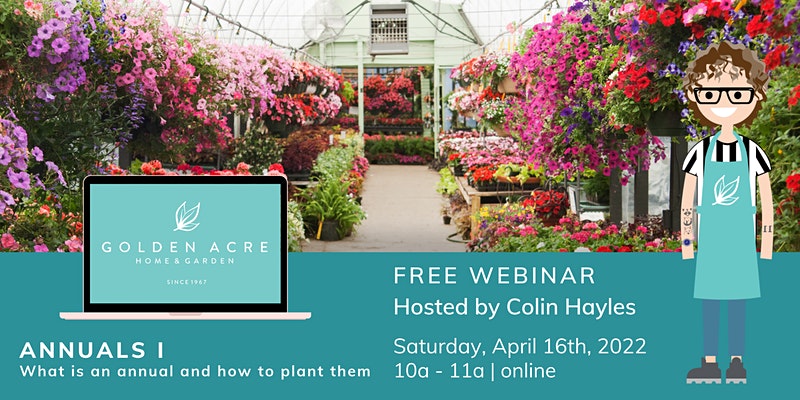Hello eager gardeners!
There’s so much action in the greenhouse right now! We have annuals and perennials starting to fill our greenhouse. While it’s still early to plant outdoors, it’s never too early to learn about them so you can be prepared for that green light!
So what is an annual plant? Is that the one that comes back every year? When can I plant them outside? How do I choose the right plants? What supplies to ensure I’m successful?
Annuals are the ones that complete their growth cycle and life in one growing season. The leaves, stems, and roots all die off in the autumn and winter. They won’t return in the following years, but their seeds might survive and grow in that same area if you let them. We’ve heard stories, so it’s possible!
Annuals include an enormous group of plants here in Southern Alberta:
- Flowers:
- Sun Loving – Marigold, Sunflower, Zinnia, Tea Rose, Petunia, Geranium, etc.
- Shade Loving – Impatiens, Begonia, Fuchsia, New Guinea Impatiens, Bacopa, etc.
- Vegetables:
- Sun Loving – Tomato, Pepper, Cucumber, Strawberry, Watermelon, Pumpkin, etc
- Shade Loving – Arugula, Spinach, Kale, Lettuce, Broccoli, Potato, etc
- Herbs:
- Sun Loving – Basil, Thyme, Oregano, Rosemary, Lavender, Sage, etc
- Shade Loving – Mint, Dill, Parsely, Chives, Chervil, etc.
Want a reference tool while you’re on the go?
While you’re shopping at Golden Acre, our new Plant Finder website is a convenient tool to help you make decisions on finding compatible plants for your garden! It’s easy to use and mobile-friendly!
Some of the things Colin touched on this morning included:
- How to Plant Annuals (Flowerbed)
- Loosen soil by adding amendments (compost, peat moss, etc)
- No deeper than 2″ – 4″
- Dig hole slightly wider than the annual pot
- Gently remove annual by squeezing the pot
- place in the hole and backfill with soil just up until the soil line.
- Water softly but saturated. Don’t use a hard nozzle setting.
- Loosen soil by adding amendments (compost, peat moss, etc)
- How to Plant Annuals (Pot/Basket)
- Add fresh potting mix until roughly 2 – 4″ from the top.
- Dig hole slightly wider than the annual pot
- Gently remove annual by squeezing the pot
- place in the hole and backfill with soil just up until the soil line.
- Water softly but saturated. Don’t use a hard nozzle setting.
- Where to Plant
- Consider factors like sun exposure, mature height, and factors that may impact watering and fertilizing like animals.
- Consider opportunities like stairs, decks, etc where you can jazz up with plants.
- Hanging baskets are perfect for small spaces.
- Vines are fun on fencing and trellis!
- When to Plant
- Always after the last frost in Southern Alberta due to their tender nature. (Roughly May Long Weekend)
- Do planting and watering all in one session.
- Care Tips
- Watering
- Check often, especially on hot summer days.
- Some annuals might require multiple watering in a single day, especially in raised planters, hanging baskets, and planters.
- Overwatering leads to root rot, so make sure planters are not sitting in water.
- Fertilizing
- Start fertilizing annuals immediately and continue until Autumn
- Follow manufacturers’ recommendations.
- DO NOT OVER FERTILIZE! So important as fertilizer can cause roots to burn.
- You can use an all purpose fertilizer or a bloom specific fertilizer.
- Deadheading
- Remove tired blooms to encourage more growth.
- Watering
The more detailed encore presentation hosted by Colin Hayles is now available to view on our YouTube channel.
If you’d like a copy of Colin’s PowerPoint, click here: Annuals I Webinar 2022.
UPCOMING FREE WEBINARS:
Apr 20, 2022: Growing Cannabis (18+) <<< Register Now
Apr 23, 2022: Perennials Webinar – What they are including division and transplant techniques <<< Register Now
Registration for all of our Saturday Spring Webinars <<<

